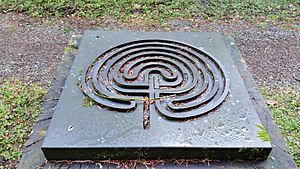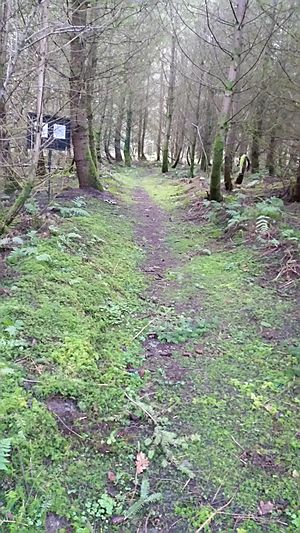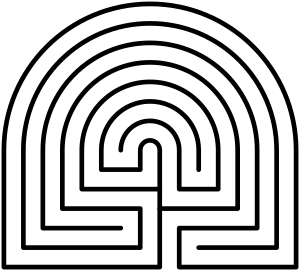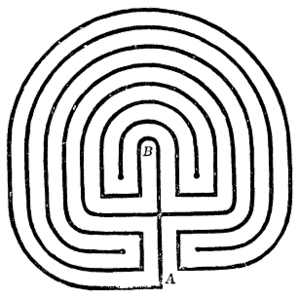Caerdroia facts for kids
A caerdroia is a special kind of maze found in Wales. It's usually built on grassy hilltops by shepherds. These mazes often follow a classic design, like the famous labyrinth from ancient Crete.
People believe these mazes were used for old ritual dances, but exactly what those dances were like is now a mystery. In the middle of each caerdroia, there was a small mound of earth called a twmpath in Welsh. Even today, a gathering for folk dancing in Wales is still called a twmpath dawns. While most caerdroias are in Wales, one has been found in Italy, which is quite rare for this type of maze.
What Does 'Caerdroia' Mean?
The word Caerdroia comes from the Welsh language. It means "a labyrinth" or "a maze." It also means "Troy, Walls-of-Troy." You might see it spelled as Caer Droia or Caerdroia, with the latter being the most common spelling now.
Some people thought the name meant 'fortress of turns' because of a similar-sounding Welsh word, troeau, which means 'turns'. However, the real connection is to the ancient city of Troy. Many turf mazes in England were called Troy Town or The Walls of Troy. This is because, in old stories, the walls of Troy were said to be so confusing that any enemy who entered would get lost!
The Caerdroia in Gwydir Forest
There's a large Caerdroia maze in Gwydir Forest, which is located above the Conwy Valley in Wales. This isn't an ancient maze, but a permanent one built in 2005. It was created by a theatre group, a local social enterprise, and young people from the area.
The paths in this Caerdroia are about a mile long! This might make it the biggest maze of its kind in the world. Over the years, the trees between the paths have grown tall, making it feel like a natural part of the forest. This Caerdroia has also been used for different performances and plays.
An Old Myth About Wales and Troy
There's an old story that links Wales to the city of Troy, but historians say it's not true. This myth was made popular by a writer named Geoffrey of Monmouth. He wrote that Brutus of Troy, who was the grandson of a famous Trojan hero named Aeneas, came to Britain and founded it. In this story, Brutus was a liberator who freed enslaved Trojans. However, most experts today believe that Brutus of Troy was just a character from medieval stories, not a real person.





